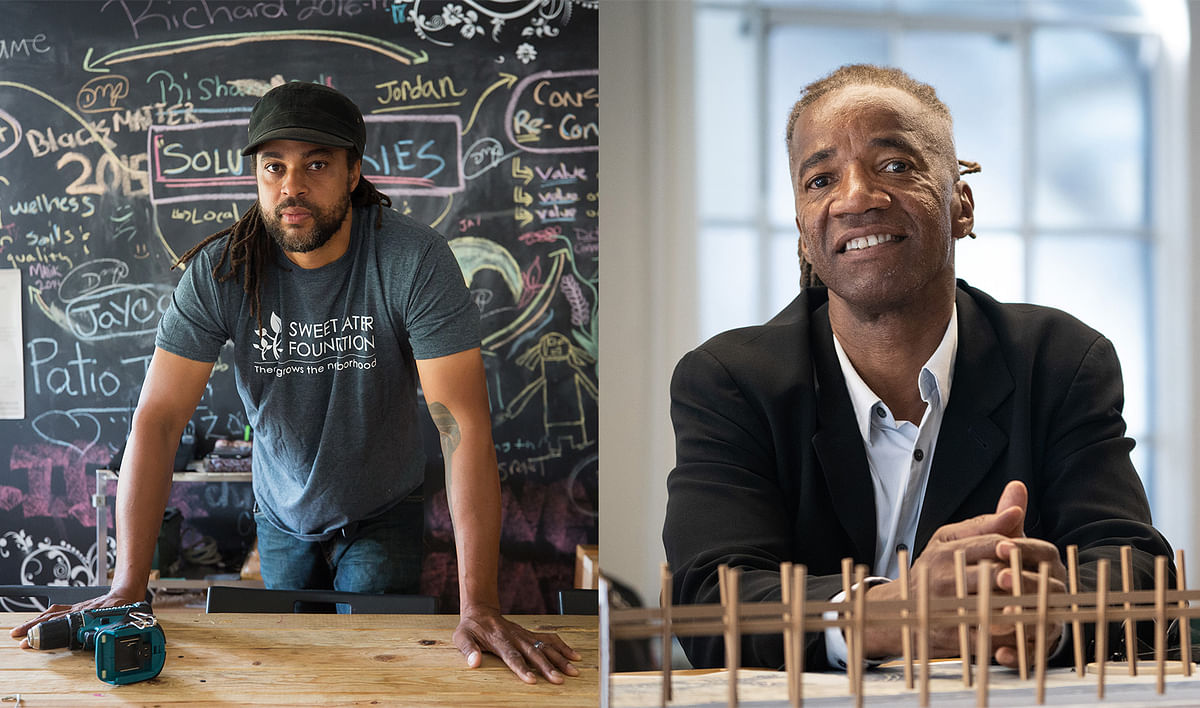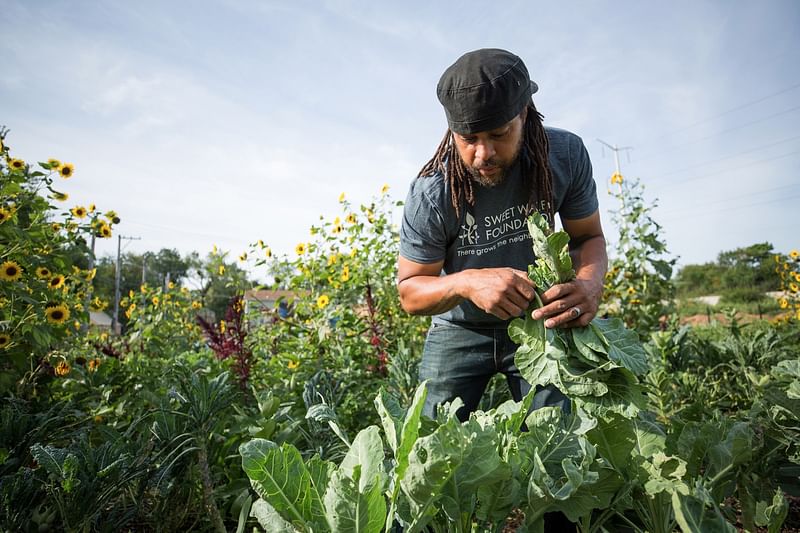Walter Hood and Emmanuel Pratt among 2019 MacArthur Fellows
By Justine Testado|
Wednesday, Sep 25, 2019

Related
Landscape and public artist Walter Hood and urban designer Emmanuel Pratt have been named as 2019 MacArthur Fellows, the MacArthur Foundation announced today. Since 1981, the yearly $625,000 grant is bestowed to talented individuals who have shown extraordinary originality and dedication in their creative pursuits — be it design, science, or poetry — and show promising capability to do more.
“This year’s 26 extraordinary MacArthur Fellows demonstrate the power of individual creativity to reframe old problems, spur reflection, create new knowledge, and better the world for everyone. They give us reason for hope, and they inspire us all to follow our own creative instincts,” MacArthur Foundation President John Palfrey said in a statement.
As a co-founder and executive director of Sweet Water Foundation, a non-profit in Chicago's South Side, Emmanuel Pratt was praised for his holistic approach to community development that integrates agriculture, education, and design.
Walter Hood, founder and creative director of Hood Design Studio and Professor of Landscape Architecture and Environmental Planning and Urban Design at UC Berkeley, was praised for his transformative landscape and art interventions that imbue social justice and equity in public spaces.
You can read more and watch videos about the design fellows and their work below.

Emmanuel Pratt, urban designer
Areas of Focus: Housing and Community/Economic Development, Architecture and Environmental Design, Food and Agriculture
Location: Chicago, IL
Forty-two-year-old Emmanuel Pratt is a co-founder and executive director of the Sweet Water Foundation (SWF), a non-profit in Chicago's South Side that engages residents to cultivate social, environmental, and economic resources to transform their neglected neighborhoods into vibrant, thriving spaces. Pratt is also a visiting lecturer in the University of Chicago Environmental and Urban Studies Program. In 2016, he was a Loeb Fellow at Harvard GSD. From 2011 to 2019, he served as the director of aquaponics at Chicago State University.
In 2011, Pratt transformed a former shoe warehouse into a vibrant aquaponics center that cultivates fish and plants: ammonia-rich waste from the fish is recycled into nutrients for the plants, which, in turn, purifies the water for recirculation.
SWF built the Perry Avenue Commons community farm, on the site of a former correctional school for boys. Spread across four city blocks, the Commons features gardens; a formerly foreclosed home that was converted into the “Think-Do House” for cooking and design workshops; solar-powered art galleries and greenhouses made from shipping containers; and a multi-purpose performance and gathering space called the “Thought Barn”. SWF's carpentry and farming programs also provide career training and apprenticeships for youth and unemployed community members.

Walter Hood, landscape and public artist
Areas of Focus: Architecture and Environmental Design, 3-D Visual Art
Location: Oakland, CA
Throughout his career, 61-year-old Walter Hood has fused his expertise in fine art and architecture to create enriching urban spaces that empower marginalized communities and also honor communal histories. Some of his works include Lafayette Square Park and Splash Pad Park in Oakland, and institutional works like the gardens of the M. H. de Young Museum in Golden State Park and the walkways of the Broad Museum in Los Angeles.
Exploring his interest in the role of sculpture in public space, Hood's latest works focus on designing commemorative landscapes. Since 2016, Hood has been planning a design for Nauck Town Square in Arlington County, Virginia, a neighborhood whose residents are descendants of a pre-Emancipation community of freed blacks. The plan includes a towering sculpture that spells “Freed” made from replica slave badges.
Hood is also designing a memorial garden for the upcoming International African American Museum in Charleston, SC, which will be built on the site where nearly 40 percent of enslaved Africans arrived in the U.S. The garden will comprise of native grasses and a tidal pool whose waters can recede to reveal an engraved pattern of life-sized figures, aligned as though they were confined within a slave ship.

RELATED NEWS The nine Harvard GSD Loeb Fellows for 2019

RELATED NEWS RAIC names five notable architects as 2019 Honorary Fellows

RELATED NEWS Kate Orff and Damon Rich awarded 2017 MacArthur 'Genius' Grant, but Urban Design was the real winner


Share
0 Comments
Comment as :